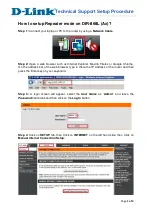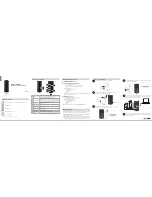
Configuration and cabling
12
ADIP
Installation Guide
System
description
Installation
parameters
Events
Accessories
Supervision
Configuration
and cabling
Tables
Data
Compatible
elements
Functions
description
Delete
Cable type and lenght
Cable
Network type
Max. recom-
mended dis-
tance
CAT-5
Can transmit data at 100 Mbps speed.
Can reach frequencies of 100 MHz
100m.
10BASE-T and
100BASE-TX
Ethernet
CAT-5E
Can transmit data at 1 Gbps speed.
Can reach frequencies of 100 MHz.
100m.
100BASE-TX
and 1000BASE-
T Ethernet
CAT-6
Can transmit data at 1 Gbps speed.
Can reach frequencies of 250 MHz.
100m.
1000BASE-T
Ethernet
CAT-6E
Can transmit data at 10 Gbps speed.
Can reach frequencies of 500 MHz.
100m.
10GBASE-T
Ethernet
CAT-7
Can transmit data at speeds of 10 Gbps. Can reach fre-
quencies of 600 MHz, not with RJ45 connectors, but with
special TERA connectors
100m.
Network cable type
Use shielded category 5,6 or 7 cable.
The cable must be symmetrical with a twisted conductor structure in pairs, an outer
sheath and shielding against electromagnetic disturbances. Shielded twisted pair (STP)
or Foiled twisted pair (FTP) shielding.
Network type
SHARED ETHERNET = 10 Mbit/s
FAST ETHERNET = 100 Mbit/s (CAT 5 requirements)
GIGABIT ETHERNET = 1000 Mbit/s (1 Gbit/s)
Connection readers cable type
The interface can receive most readers in Wiegand or DATA & CLOCK formats.
Use a shielded unshielded cable 4 to 8 conductors 6 / 10th to 9 / 10th + 1 shielding for
a maximum distance of 50m for WIEGAND and 15m for DATA & CLOCK.
For the connection of the I, G and PB inputs, the 8-conductor cable of the reader or a
shielded unshielded 2-conductor cable can be used 6 / 10th to 9 / 10th + 1 shielding
for a maximum distance of 50m.
A CAT7 cable provides up to 699MHz output and can be up to 100 meters long.













































